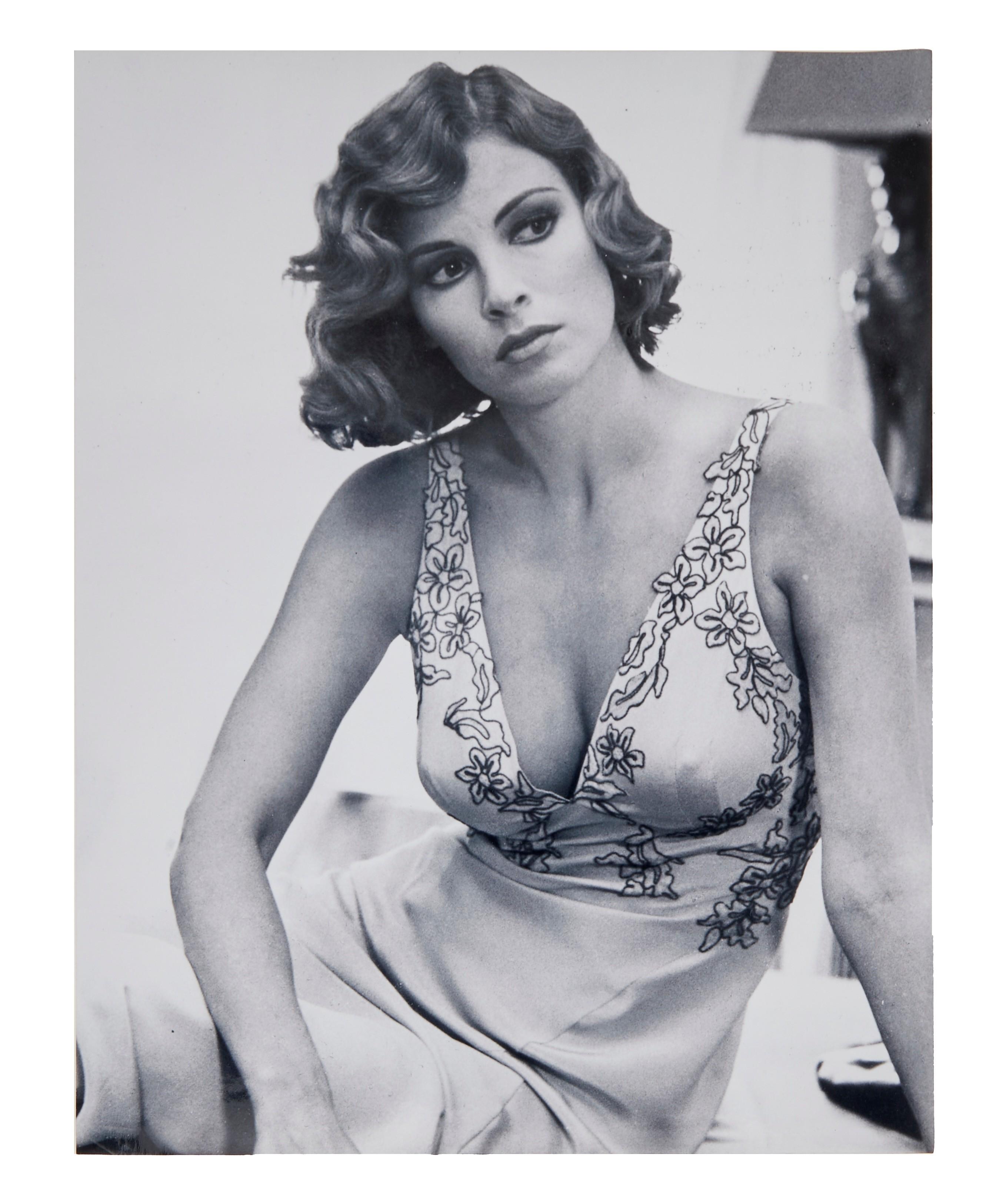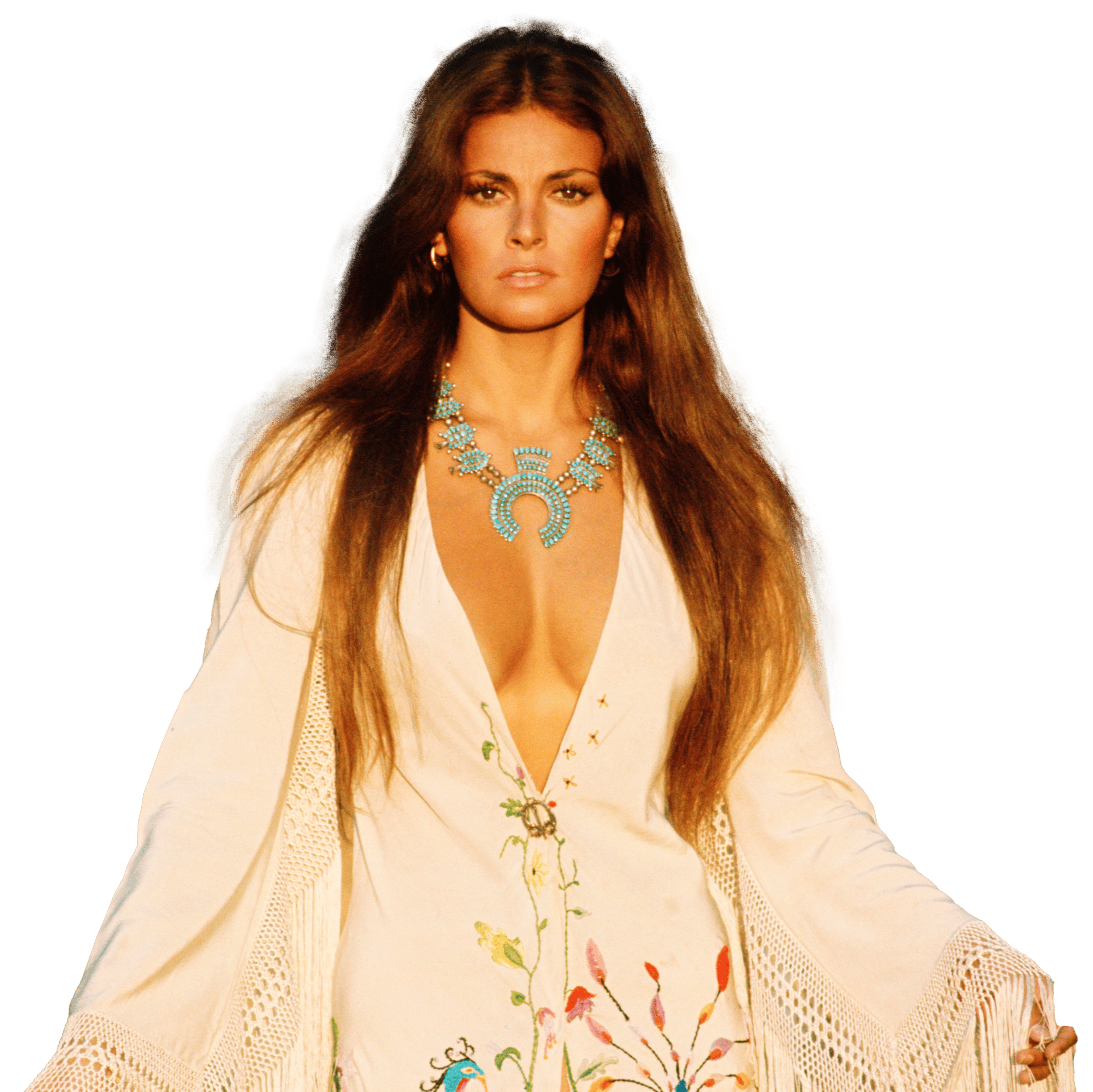Film & TV
RAQUEL WELCH: PROFILE OF A BOMBSHELL
Hailed by the New York Times as "a marvelous breathing monument to womankind” upon skyrocketing into the spotlight in 1967, Raquel Welch went from being a relative unknown to one of the 20th century’s greatest sex symbols in the span of months.
February 28, 2024

Hailed by the New York Times as "a marvelous breathing monument to womankind” upon skyrocketing into the spotlight in 1967, Raquel Welch went from being a relative unknown to one of the 20th century’s greatest sex symbols in the span of months. It was a role she relished in — making good use of all the opportunities it brought — yet sometimes reviled, as she felt it prevented her from reaching her full potential as an actress and entertainer. Despite the inner conflict brought by her rush to superstardom, Welch remained graceful throughout her career, a fierce, independent woman who broke many a barrier for those who would follow, making cinematic history along the way.
BODY TYPE
Born Jo Raquel Tejada to a Bolivian father and an anglo mother in Chicago in 1940, Raquel Welch harbored dreams of being an entertainer from a young age. She studied ballet for a decade, starting at age seven, only giving up the dream after being informed by her instructor that she did not have the correct body type. She remained undeterred in her desire to entertain, however, and as a high-schooler in her family’s adopted home town of San Diego won a slew of beauty pageants.
Upon graduating high school with honors, she attended San Diego State College on a theater arts scholarship and married her high school sweetheart, James Welch. Although the marriage was short-lived, it did result in two children along with her lifelong stage-name. The demands of family life along with a new job as a weather presenter for a local San Diego station led her to drop her drama classes. Then, once she divorced, Welch relocated to Dallas, Texas, with her two children, where she eked out a living as a model and a cocktail waitress.
BORN FOR THE STAGE
The stage kept calling her, however, and in 1963 she relocated to Los Angeles, where she pursued a career in film. After linking with former child-actor Patrick Curtis, who assumed the role of her business and personal manager, the pair developed a plan to play to her strengths and turn her into a sex symbol. The wheels started turning for real at this point, with Welch landing several small roles (including an uncredited one alongside Elvis Presley), leading up to her signing a seven-year contract with 20th Century Fox.
Wisely refusing the studio’s ideas of changing her name to “Debbie” (they thought Raquel would be too hard to pronounce), her first breakthrough role was in Saul David’s 1966 sci-fi classic “The Fantastic Voyage,” where she played member of a crack medical team who is miniaturized and injected into a scientist’s body to save his life. The film was a big hit and raised Welch’s profile considerably. However, it was in her next film that she truly broke through worldwide, leaving an image that remains indelibly etched upon the public consciousness to this day.
PREHISTORIC PIN-UP
The surprising breakthrough saw her assume the role of prehistoric sexpot Loana in “One Million Years B.C.” Through the sheer force of her on-screen presence, Welch managed to elevate what was widely seen as a forgettable gimmick movie (where she had only three lines of dialogue, not counting grunts) into a worldwide phenomenon. Donning what was referred to as “mankind’s first bikini”, a hip-hugging two-piece deerfur bikini, audiences and the media could not get enough of Welch and posters featuring a screen print of her from the film were plastered on dorm room walls throughout America over the following decade. Iconic is about the only word that can encompass her turn as prehistoric pin-up Loana, indeed it is the one that led to NYT calling her a “monument to womankind” in their review of the film, as quoted above.
The floodgates were truly opened for Raquel Welch, who spent the following decades relinquishing her role as global sex symbol (Playboy Magazine, whom she never posed nude for, despite the incessant courting of Hugh Hefner, named her “The Most Desired Woman of the 1970s”), while trying to keep serious about her work as an actress. She worked hard to hone her craft and sought to assume different and difficult roles, an ambition which wasn’t always met with enthusiasm from the Hollywood powers that be.
Appearing in hits such as “The Three Musketeers,” (1973) “Bedazzled” (1967) and “Bandolero!” (1968) (the latter of which has been cited by Quentin Tarantino as inspiration for Kill Bill Vol. 1), Welch also tried her hand at more subversive roles. Appearing as a trans woman in an adaption of Gore Vidal’s “Myra Breckinridge” saw her challenge norms of the day, while she made cinematic history with her love scene with actor Jim Brown in “100 Rifles” — the first on-screen portrayal of interracial intimacy in a mainstream movie.
THE LIFE OF A COKE BOTTLE
Of course, life as an international sex symbol is not without its frustrations. In a 1974 Rolling Stone interview Welch discussed her conflicted feelings towards her career and status. ““Beauty to me is a crutch,” she said. “It’s what I built my career on. To be accepted by other human beings was always my first insecurity, and all the things I tried to do in childhood were eventually solved when I got to the age that I could be accepted as a woman.”
“To the greater public I’m the American walking, talking Coke bottle, the Marlboro woman,” she further remarked. “I hate it. I laugh ’cause it’s funny, but I hate it. Let’s face it, how do you live the life of a Coke bottle? There’s no tangibility to my ‘image.’ I doubt if people even believe my parts move. Well, they do, they do.”
“I’M A PERSON”
Always the entertainer, Raquel Welch spent the seventies trying her hand as a singer with great success, and performed a number of stage shows in Las Vegas and elsewhere — all while starring in a plethora of successful Hollywood movies. The eighties saw her slowly withdraw from the spotlight, while she enjoyed a successful run as a health and beauty influencer and businesswoman, best known for her line of wigs called HAIRuWEAR. She never entirely retired from the screen however, appearing, for instance, in “Legally Blonde” and as herself in an unforgettable spot-on Seinfeld (“Summer of George!”).
Despite being known as sultry, lustful and wild, Raquel Welch always maintained that her personal life was far different to what she portrayed on-screen, and claimed to have quite conservative politics. This, however, did not result in any of her four marriages lasting beyond a few years.
Raquel Welch died at from cardiac arrest at her Los Angeles home on February 15, 2023, at age 83. Aside from her two loving children, she left behind a rich legacy, having long since transcended into the realm of icons. But, as she told Rolling Stone in 1974: “I’m not a phenomenon who exists out of time, an anachronism of sociological significance. I’m a person.”
